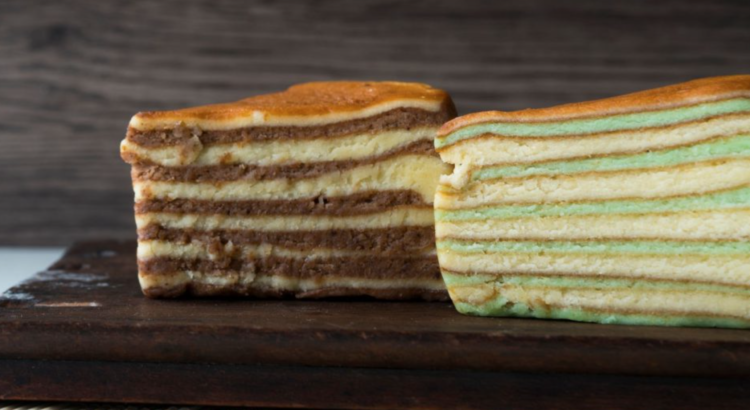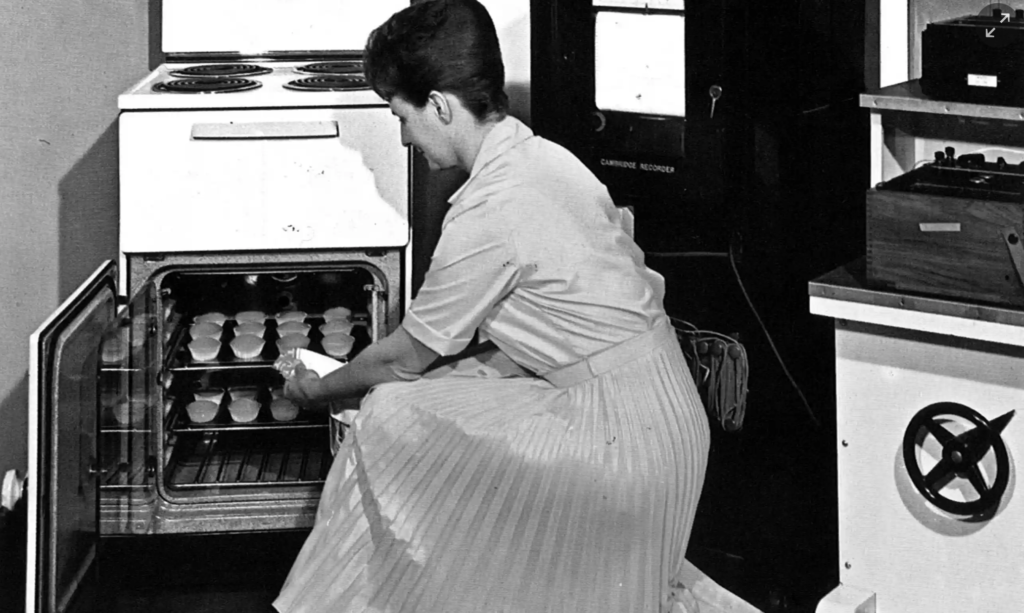Toko’s, restaurants, bakeries and even supermarkets sell it. ‘Spekkoek’ has become so common in the Netherlands that you can find it everywhere. It has become part of the Dutch culture and is promoted as an Indonesian snack. I was curious about the specific origins in Indonesia of this cake, so I started my research. But where I expected to get a simple and clear story, it turned out to be much more complex than that. There are several countries that claim to be the inventor of this delicacy. Who is right?
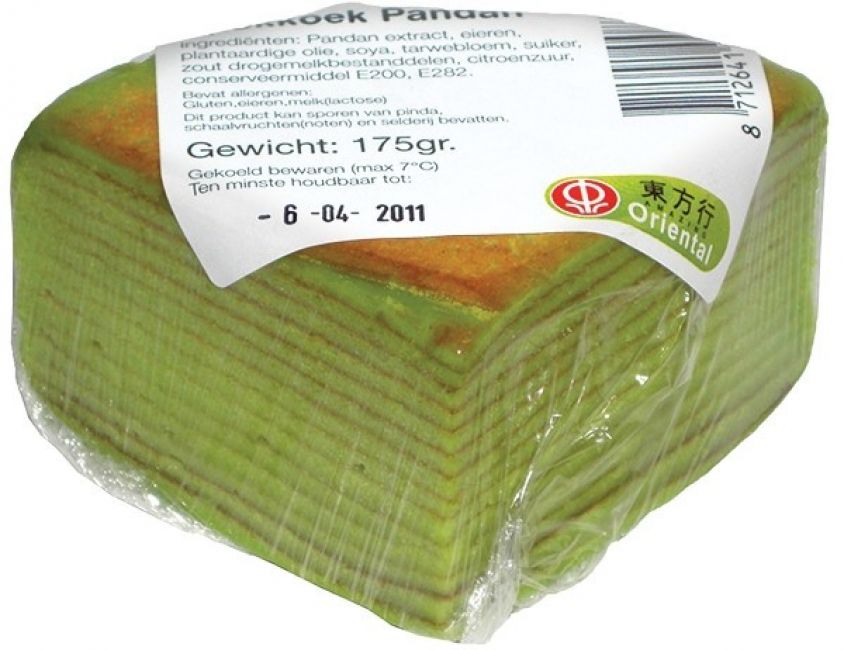
A marathon of strength and endurance
The literal translation of ‘spekkoek’ is ‘bacon cake’. But don’t be fooled by the name, this cake is not savoury at all! Where does this name come from then? There is a simple explanation. Since the cake consists of many layers, people associated it with bacon. This led to the inventive name ‘spekkoek’. The cake consists of eggs, butter, sugar, flour and the secret ingredients nutmag and cardemon.
In addition to these components there are two other important ingredients: patience and muscle strength. Since you have to bake the cake layer by layer you have to beat up the eggs endlessly and stir the butter. So it takes much self-control and vigor to bake this cake. You could compare it with the energy required to run a half marathon, because it took more than an hour to beat the egg yolk by hand! Besides that, you needed to bake the cake in a charcoal oven.
Pff, can you imagine how much time these actions took! This explains why it was only prepared for special occasions. Luckily, there were two inventions which shortened this long and time-consuming preparation process. The invention of the electric mixers and the ‘Baby Belling oven‘ were gamechangers. With these new gadgets, the process of making this delicacy was accelerated. Through the years, the ovens have been improved technically and got faster. Interestingly, the ‘Baby Belling oven’ is still seen as the only suitable oven for the baking process of spekkoek. So, the technical changes in the making-process are a history in itself.
The ‘authentic’ layered cake
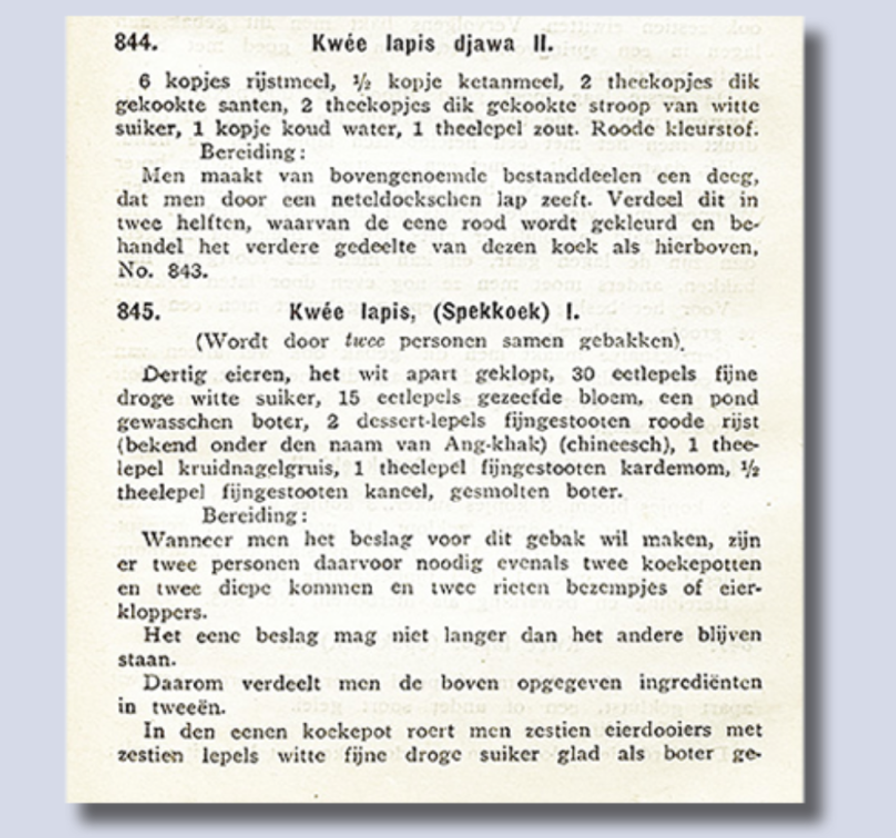
Now that we know more about the manufacturing process, let’s dive into the debate of the origin of this layered cake. The most common story which has been told by the Dutch people is that spekkoek is a Dutch invention originating from the colonial times when the Dutch were the colonial rulers of what was then called ‘the Dutch East Indies’. The colonials missed the Dutch winter holidays which they associated with snacks from the mother country such as ‘speculaas‘. Since that delicacy wasn’t available, they tried to recreate something with the same taste. They added the same spices in the batter of an Indonesian cake which led to the creation of spekkoek.
This story already illustrates that it was a mixture of Indonesian and Dutch food culture. This tale seems plausible since the layered cake ‘Kue Lapis Legit’ was an essential element during major festivals such as Lunar New Year. This cake was already a mix of the Malaysian, Indonesian and Peranakan Chinese culture. The communities who took part in these festivals had roots in the trade branches of the maritime Southeast Asia Dutch colonial era so it’s quite probable that the Dutch came in this way in contact with this Indonesian cake. If this is true, it means that the so-called ‘authentic spekkoek’ was already a mix of several cultures.
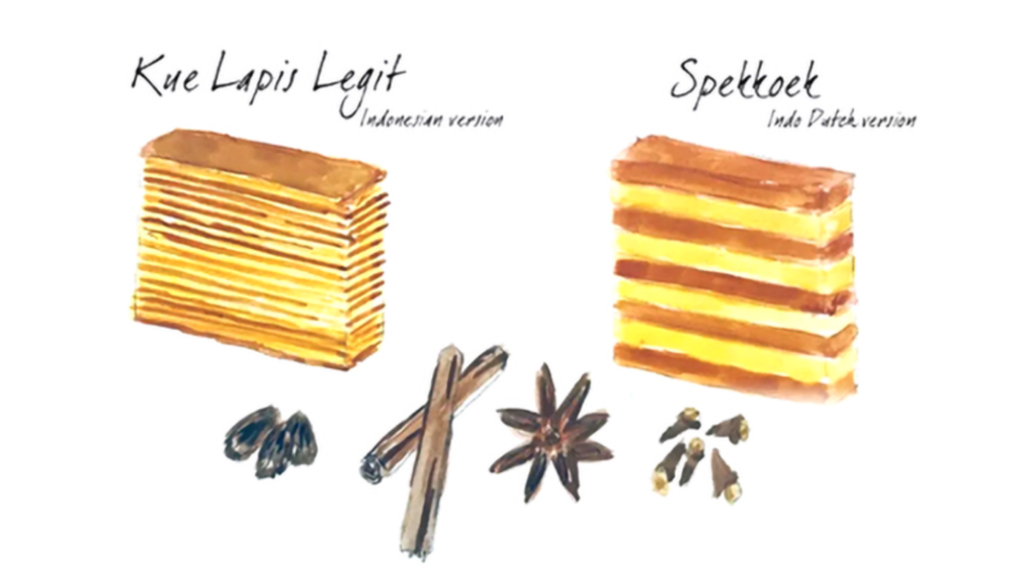
But the story gets even more more interesting. During my research I came across a layered Portuguese cake which is called ‘Bebinca’. My mouth felt wide open because it seemed quite similar to spekkoek and Kue Lapis Legit. By comparing several cookbooks recipes I discovered that there is an overlap in ingredients but the main difference is that less flour was used for the Bebinca.
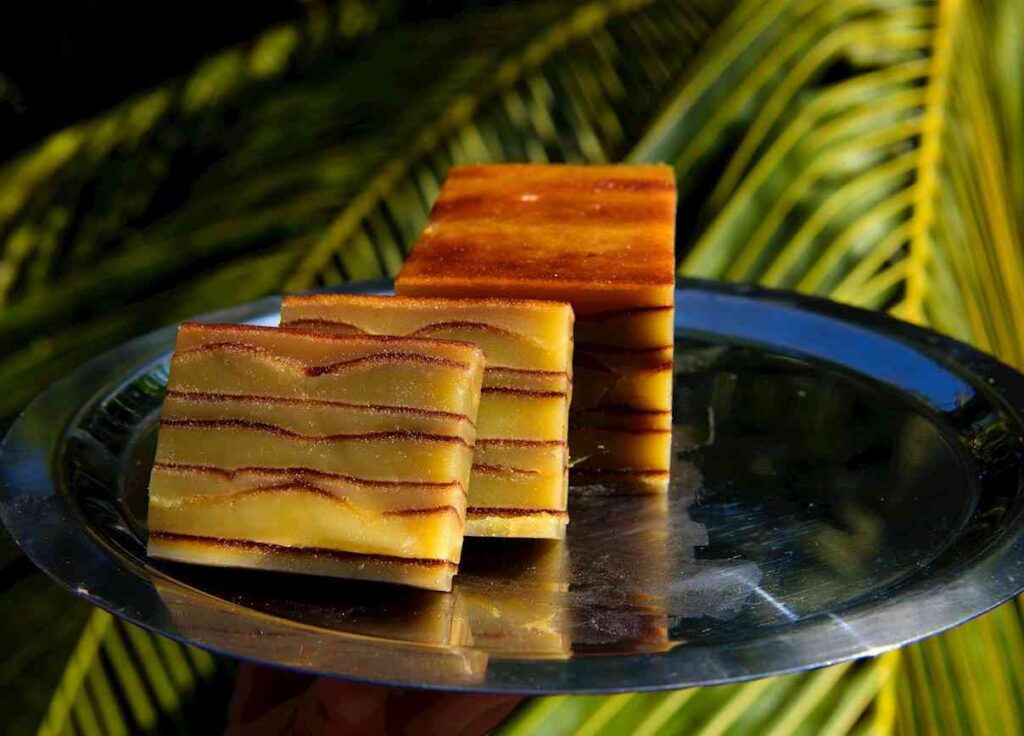
Bebinca has its roots in the Indian state Goa where the Portuguese used to have a colony. Therefore, it’s not surprising that the Portuguese have a cake which is quite similar to the Dutch version, since they also had colonies in the Indonesian archipelago before the Dutch colonization. It’s plausible that the Portuguese brought this cake to their colonies in the Indonesian archipelago which might have inspired the creation of Kue Lapis Legit and ultimately spekkoek. In sum, even though the Indonesians, Dutch and Portuguese claim that they have their own ‘authentic’ cake, it seems that the roots of these different delicacies are culturally intertwined.
A piece of world history
This leads me to the question: to what extent can we call these layered cakes ‘authentic’? Does there really exist a true origin of food? I suggest that instead of finding out the original creator, we should consider this multilayered cake as an example of a cosmopolitan product, wherein each layer of the cake represents a different culture and history. So next time you eat spekkoek, remind yourself that it’s not just a cake, but a piece of world history on your plate!
Written by Emma van Herwijnen
